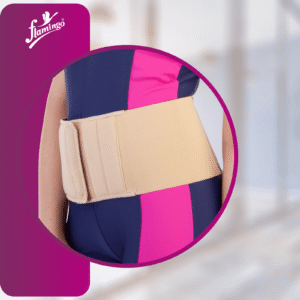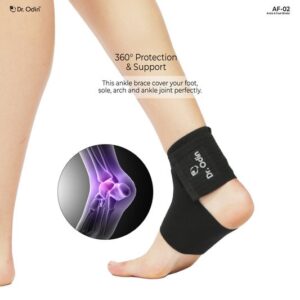Pelvic Binder
₹860.00 Original price was: ₹860.00.₹825.00Current price is: ₹825.00.
A pelvic binder is a medical device designed to provide stabilization and support to the pelvis following traumatic injuries, such as pelvic fractures. Typically made from strong, adjustable materials, the binder is wrapped around the pelvis and tightened to minimize hemorrhage and maintain proper alignment of the pelvic bones. This device is commonly used in emergency situations, especially in pre-hospital care, to reduce movement and prevent further injury before definitive treatment can be administered. The application of a pelvic binder is a critical intervention in managing traumatic injuries effectively and can significantly improve patient outcomes.
A pelvic binder is a vital medical device designed for the stabilization of the pelvis during trauma emergency situations Its primary function is to minimize the movement of the pelvis and control hemorrhage in patients who experience fractures to the pelvic area This tool is critical in prehospital settings and emergency room environments where immediate intervention can significantly affect patient outcomes
1 The pelvic binder is typically made from strong lightweight materials such as fabric or plastic which allows for easy application and adjustment
2 By applying external compression to the pelvic region the binder helps to reduce blood loss due to potential tears in blood vessels surrounding the fractured pelvis
3 The device is usually applied around the greater trochanters of the femur which are located at the upper end of the thigh bone ensuring a tight fit to stabilize the pelvis
4 Pelvic binders are particularly important in cases of high-energy trauma such as car accidents falls from heights or severe sports injuries
5 Early application of a pelvic binder in trauma cases can significantly reduce the risk of severe complications such as hypovolemic shock or death from massive hemorrhage
6 There are various types of pelvic binders including sheet type binders inflatable binders and rigid binders each serving specific needs based on the situation
7 Training for healthcare providers in the proper use of pelvic binders is crucial to ensure effective application and to minimize the chance of further injury
8 The binder is usually applied while the patient is in a supine position which allows for easier access and proper alignment
9 The application time for a pelvic binder should be minimized to ensure rapid and effective control of bleeding before further treatments are administered
10 Monitoring the patient after application is important as excessive compression can lead to compartment syndrome or pressure ulcers if not managed properly
11 Pelvic binders are not a permanent solution but are meant for temporary stabilization until definitive surgical intervention can be performed
12 Some binders come with built-in indicators that allow healthcare professionals to assess the effectiveness of the binding technique during application
13 Research has shown that early use of pelvic binders is associated with improved survival rates in patients with pelvic fractures
14 The use of a pelvic binder forms part of the Advanced Trauma Life Support (ATLS) guidelines which establish a standard for trauma management
15 In recent years the design and functionality of pelvic binders have evolved with advancements in materials technology improving comfort and ease of use
In conclusion the pelvic binder is an essential tool in emergency medicine Its role in stabilizing the pelvis during traumatic injuries cannot be overstated and its proper application can help save lives by controlling bleeding while preparing the patient for further medical intervention
Related products
-
Abdomen Support
Abdominal Belt – 14 cm
Rated 0 out of 5₹500.00Original price was: ₹500.00.₹425.00Current price is: ₹425.00. Add to cart Buy Now -
Ankel
Ankle & Foot Binder
Rated 0 out of 5₹350.00Original price was: ₹350.00.₹298.00Current price is: ₹298.00. Add to cart Buy Now -
Wrist / Thombo
Wrist Binder With Double Lock (Mild Support)| Provides Firm Grip & Support For To The Wrist For Sports & Workout (Grey)
Rated 0 out of 5₹215.00Original price was: ₹215.00.₹204.00Current price is: ₹204.00. Add to cart Buy Now -
chest
Chest Binder
Rated 0 out of 5₹1,210.00Original price was: ₹1,210.00.₹968.00Current price is: ₹968.00. Add to cart Buy Now







Reviews
There are no reviews yet.